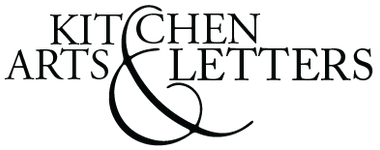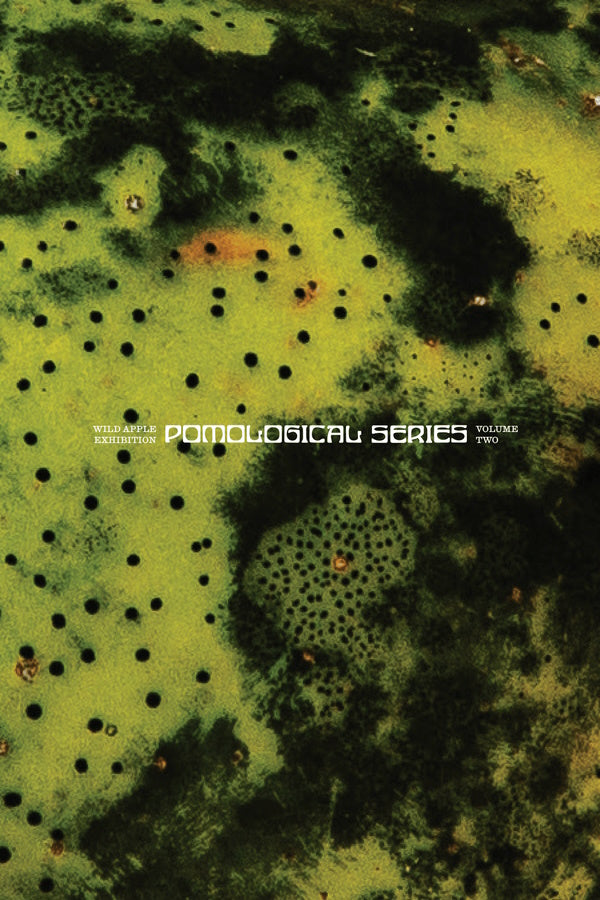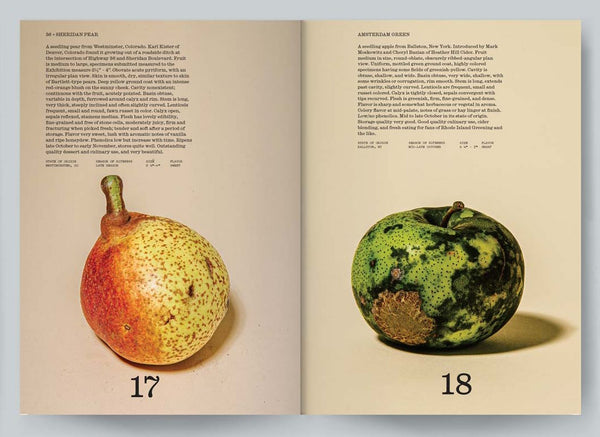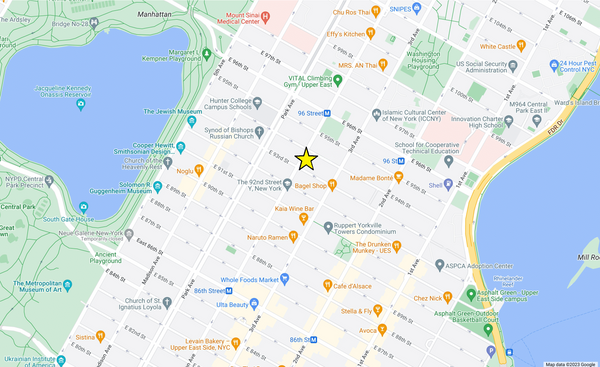Wild Apple Exhibition: Pomological Series Volume 2
Shipping calculated at checkout
These books are from a limited printing of 500 copies.
Because they do not breed true—a tree grown from a seed of a recognized variety may bear fruit that bears no resemblance to either of its parents—apples are astonishingly diverse. Even in this age of industrialized agriculture and trademarked varieties, there are adventurous souls who seek out, taste, and attempt to cultivate previously unrecognized apples of great quality.
This volume presents and describes 80 of such specimens submitted to the 2nd Wild and Seedling Pomological Exhibition, held in November of 2021 in Ashfield, Massachusetts. The specimens were found across the United States and Canada by amateur enthusiasts and professional pomologists and orchardists, each of whom found something remarkable in what they believed to be a previously unknown variety.
Each of the specimens was photographed by renowned apple photographer William Mullan (it's wonderful that there is such a thing). Descriptions detail who discovered the fruit and where, as well as the shape, size, color, skin texture and patterning, stem and calyx characteristics, and the physical qualities of the flesh. Descriptions of flavor and best use of the apple were compiled from a composite of tasting notes from the submitters and attendees at the Exhibition.
Browsing this book is an invitation to consider a world of overlooked wealth. One apple came from a tree found growing in roadside ditch in Denver; another on a ridge in the Virginia Piedmont. The orchardist who submitted Petite Rouge a Robert from Quebec recommends wearing a helmet while harvesting the fruit because the tree grows tall enough that a falling apple will gain dangerous velocity.
There are other cautions as well. The mother tree of Barn Hill Sharp, found in Hector, NY, near the shores of Seneca Lake, was bulldozed to make way for an industrial dairy farm, though luckily grafts had already been taken.
And as the cover of this book makes clear, some of the most interesting apples are not cosmetically what consumers may have been led to expect from years of grocery store shopping. All the more reason, then, to tip our hats to this effort to preserve and expand knowledge of an important resource.
Paperback. Color photographs throughout.



